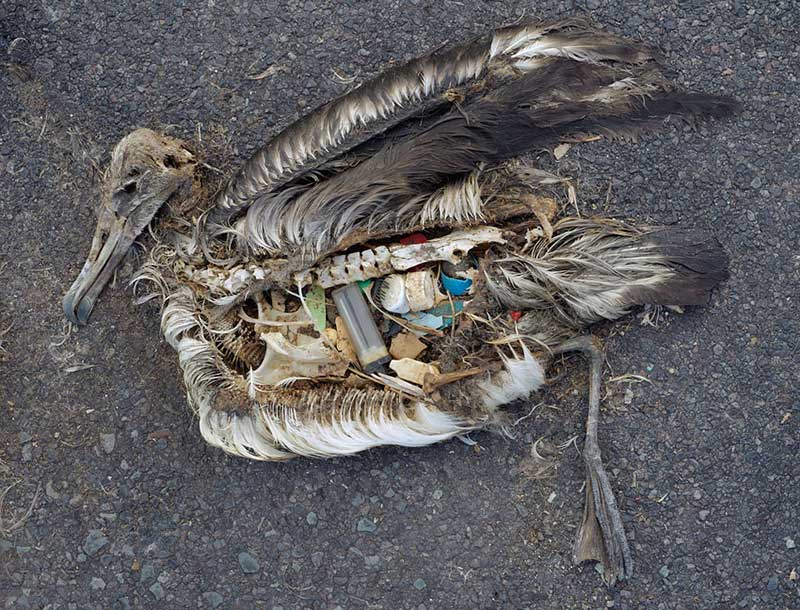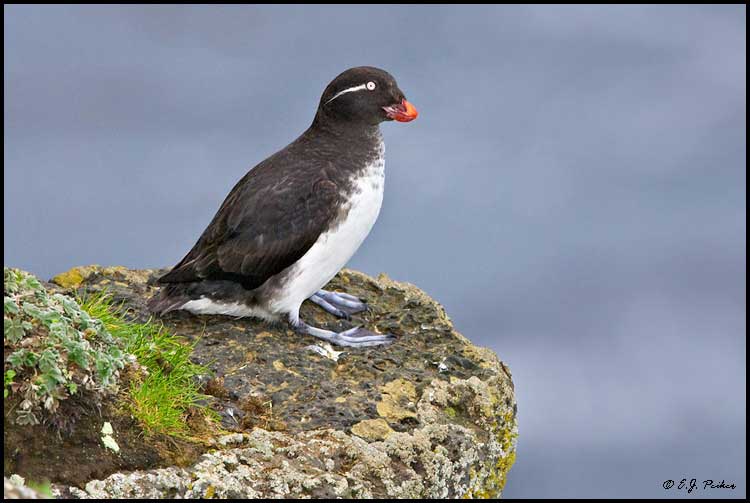Australia – A new study found that 90% of seabirds eat plastic, as so much waste of the material flows through the oceans. The research calculates that by 2050, every single seabird in the world will have plastic in their stomachs. The finding shows for the first time how widespread plastics have become inside seabirds around the world.
Chris Wilcox, lead author and research scientist with Australia’s Commonwealth Scientific and Industrial Research Organization said, “That was shocking. Essentially, the number of species and number of individuals within species that you find plastic in is going up fairly rapidly by a couple percent every year.”

Plastic found inside the animals included bottles, synthetic fibers from clothing, bags and tiny bits that were broke by the waves and the sun.
According to Wilcox, what concerned him the most was the relation between the increasing rate of plastics manufacturing and the growing rate at which seabirds consume the material.
“Global plastic production doubles every 11 years. So in the next 11 years, we’ll make as much plastic as we’ve made since plastic was invented. Seabirds’ ingestion of plastic is tracking with that,” Wilcox said.
For the study, which was published in the Proceedings of the National Academy of Sciences, the team used a mixture of literature surveys, oceanographic modeling, and ecological models to predict the risk of plastic ingestion to 186 seabird species globally. The research determined that the highest concentration of plastic in birds where at the southern boundary of the Indian, Pacific, and Atlantic Oceans, which was quite surprising for scientists as the region was thought to be relatively clean.
Large birds like the Albatross, eat big amounts of plastic. However, it doesn’t mean that these creatures eat proportionately more of it. Indeed, the parakeet auklets, a small bird, shows the highest propensity towards eating the damaging material.

Until now, the specific health effects that plastic consumption may cause on seabirds remain unclear, but data already collected concerns Wilcox. For instance, plastic waste with sharp edges can kill birds by opening holes in their internal organs. Some birds eat so much plastic that there is no space available in their gut for real food. One bird examined by Denise Hardesty consumed a huge amount of 200 pieces of plastic.
Another recent study found a 67% decline in seabird populations from 1950 to 2010.
“Essentially seabirds are going extinct,” says Wilcox. “Maybe not tomorrow. But they’re headed down sharply. Plastic is one of the threats they face.”
Experts on the subject have been tracking plastic ingestion by seabirds for decades. In 1960, plastic was found in the stomachs of less than 5% of the population of these birds. But, it 1980, it raised to 80%.
https://www.youtube.com/watch?v=dAL9Xvrg3hI
Source: Proceedings of the National Academy of Sciences.
